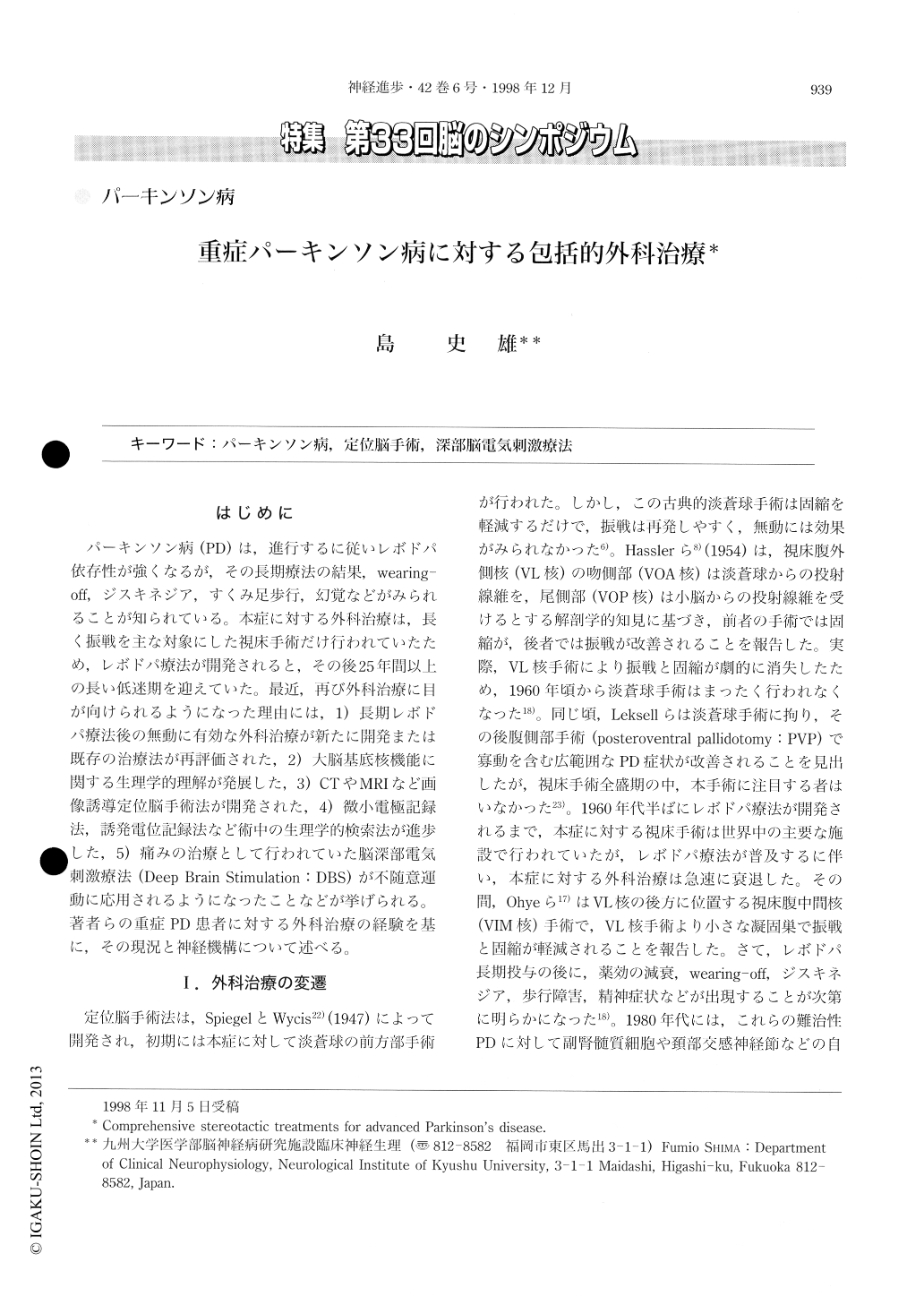Japanese
English
- 有料閲覧
- Abstract 文献概要
- 1ページ目 Look Inside
はじめに
パーキンソン病(PD)は,進行するに従いレボドパ依存性が強くなるが,その長期療法の結果,wearing-off,ジスキネジア,すくみ足歩行,幻覚などがみられることが知られている。本症に対する外科治療は,長く振戦を主な対象にした視床手術だけ行われていたため,レボドパ療法が開発されると,その後25年間以上の長い低迷期を迎えていた。最近,再び外科治療に目が向けられるようになった理由には,1)長期レボドパ療法後の無動に有効な外科治療が新たに開発または既存の治療法が再評価された,2)大脳基底核機能に関する生理学的理解が発展した,3)CTやMRIなど画像誘導定位脳手術法が開発された,4)微小電極記録法,誘発電位記録法など術中の生理学的検索法が進歩した,5)痛みの治療として行われていた脳深部電気刺激療法(Deep Brain Stimulation:DBS)が不随意運動に応用されるようになったことなどが挙げられる。著者らの重症PD患者に対する外科治療の経験を基に,その現況と神経機構について述べる。
Long-term levodopa therapy of Parkinson's disease (PD) tends to induce wearing-off, freezing, dyskinesia and hallucination. Recently, posteroventral pallidotomy (PVP) initiated by Leksell in the 1950's has been applied in worldwide to the advanced PD patients with the long-term levodopa syndrome. However, it becomes aware of unilateral PVP improves insufficiently wearing-off symptoms or on-freezing, and bilateral PVP sometimes complicates speech in a whisper and hypersalivation.

Copyright © 1998, Igaku-Shoin Ltd. All rights reserved.


